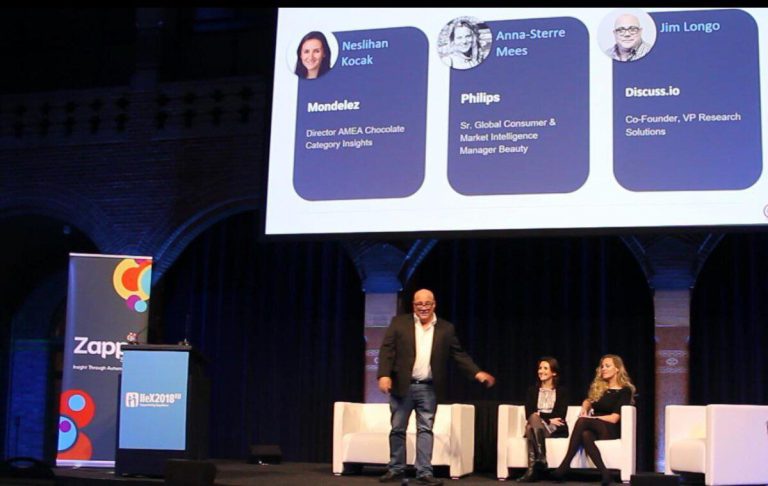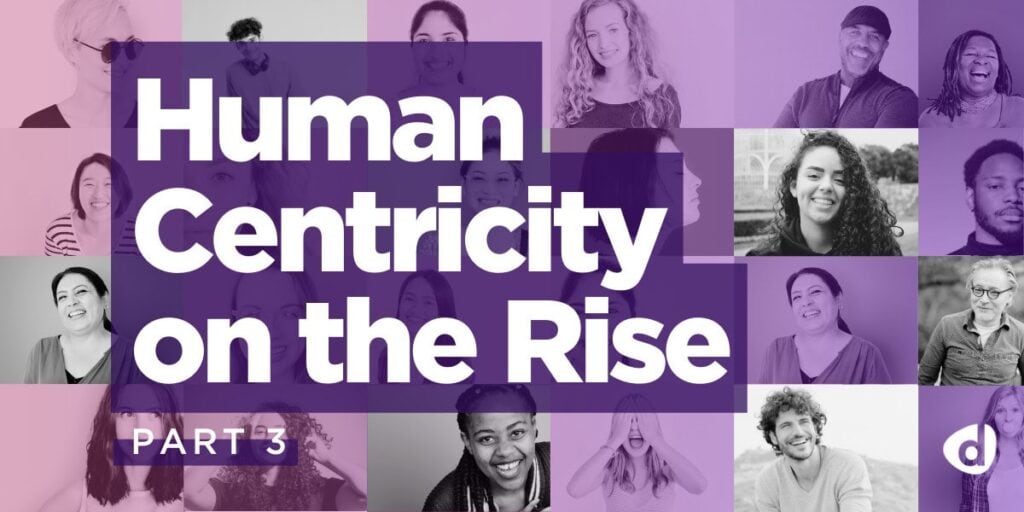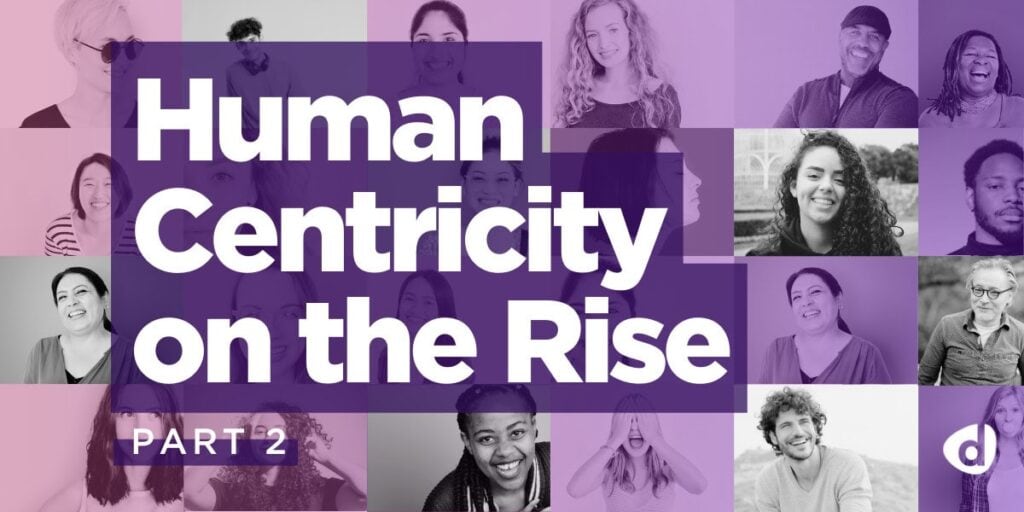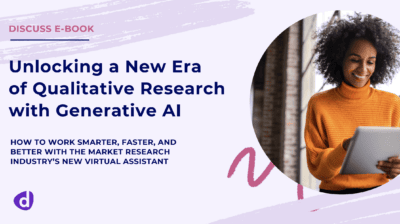Mondelez and Philips talk consumer-centricity at IIeX EU

I recently had the pleasure of speaking on stage with Neslihan Kocak of Mondelez and Anna-Sterre Mees of Philips Electronics at the Insights Innovation Exchange (IIeX) in Amsterdam. Both speakers shared their experiences with how they are helping their teams and companies to become more consumer-centric through the use of habitual, widespread, and direct conversation with consumers.
I am excited to share their responses from the session here.
Question: How do you embed “voice of customer” in your marketing and product innovation?
Kocak and Mees share the importance of giving the consumer a role in decision making within their organizations. Accessing the “voice of the consumer” gives their teams focus and allows them to actually carry out their missions with validated insights based on consumer-centricity, instead of just talking about it.
Question: How did you get buy in to launch a Connect consumer-centricity initiative? How do your superiors understand the need for this?
Mees discusses the value of having people connect directly with consumers. She notes that, for many of them, the project becomes like their “baby,” and feedback lands much better when they hear it first hand, rather than when they read it in a report. She also notes that it helps that the using the platform is cheaper. Kocak continues, noting that she also gains greater buy in when other teams realize that this is a tool that’s purely there to help them get closer to consumers, that it’s not a task that’s been superficially assigned to them by the Insights team. Both panelists mention the cost and speed afforded by the technology as additional benefits that drive buy in, particularly when doing research globally.
Question: What inspired you to launch a Connects Program? What was the catalyst?
Both speakers cite the global nature of their work as a large component of what prompted them to launch a consumer engagement initiative with Discuss.io, leveraging technology to do so. Mees cites an example of a way that they used to approach consumer understanding, through ethnography, as a tool that’s no longer possible for her team to scale. She states that she can’t fly in members of her team from around the world to observe a woman in her bathroom.
Kocak oversees a large region, spanning from Morocco to New Zealand. She states that not only Insights people, but Marketers as well, need to become closer to consumers in order to understand consumers and larger goals. With over 70 countries within her geography, it’s impossible for her team rely on travel in order to observe and maintain a good understanding of those consumers, and yet the decisions need to be made. She cites that technology is what enables her team to make these decisions, allowing them to keep the consumer at the core. She notes that this is also a challenge for their local teams, who were losing a lot of time to in-home ethnographies, resulting in them doing them less and less frequently and leading to generic insights based on assumptions that aren’t relevant for consumers.
Question: Who are your users and how do you educate them?
The two speakers share the teams outside of strictly the Insights Department who are participating in the program, including teams like Marketing and Product Innovation. Furthermore, the users are scattered around the world, working in markets far away from their home bases. When Marketers want to ask consumers about a timely event, they previously would have had to ask to fly to those markets at a moment’s notice. Naturally, this is not feasible, but when they leverage technology, they are able to talk to consumers immediately, in whatever market they want.
Question: How do you manage and make a Connects Program successful, internally?
Kocak expresses that the launch of the initiative was rocky, stating that many from her team did not understand that the Connects with consumers couldn’t be canceled, like an internal meeting. She notes that once they put a process into place and built an understanding that, just as you wouldn’t cancel a focus group at the last minute, you can’t cancel a Connect, things leveled out. She stresses the importance of appointing someone internally to manage the initiative and to put a process and guardrails into place.
Question: How do you market a Connects Program internally?
Kocak recommends shaping the program with the help of a Marketeer. Then with that support, they can recommended to other Marketers not to discuss their marketing plans in terms of implementation until they have spoken with 40 consumers of their brand (as an example).
Question: How do you train non market researchers to talk to consumers?
Kocak explains that for many on her team, it was a shock to their system to actually have a conversation with consumers without a moderator or from behind the glass. She notes that they took time to train the users in how to talk to consumers themselves through the help of moderation guides and other tools. Furthermore, they were sure to teach their non researcher colleagues to not over generalize or to view their conversations as conclusive, instead to see this as a means to ongoing engagement bringing them closer to consumers.
Interested in launching a consumer-centricity program within your organization? Start a conversation with us to learn more.
Sign Up for our Newsletter
Related Articles

Human Centricity on the Rise: Navigating the New Era, Part 3
How to unlock human centricity at scale with a key mindset shift In Part 1 of this blog series, I…
How to unlock human centricity at scale with a key mindset shift In Part 1 of this blog series, I…

From Apathy to Empathy: The 3 Steps to Design for Human Centricity at Scale
By Adam Mertz, Chief Growth Officer at Discuss Introduction I recently had the opportunity to moderate a compelling discussion between…
By Adam Mertz, Chief Growth Officer at Discuss Introduction I recently had the opportunity to moderate a compelling discussion between…

Human Centricity on the Rise: Navigating the New Era, Part 2
Explore the strategies driving success as global leaders prioritize human centricity in future-proofing consumer insights In the first blog of…
Explore the strategies driving success as global leaders prioritize human centricity in future-proofing consumer insights In the first blog of…


